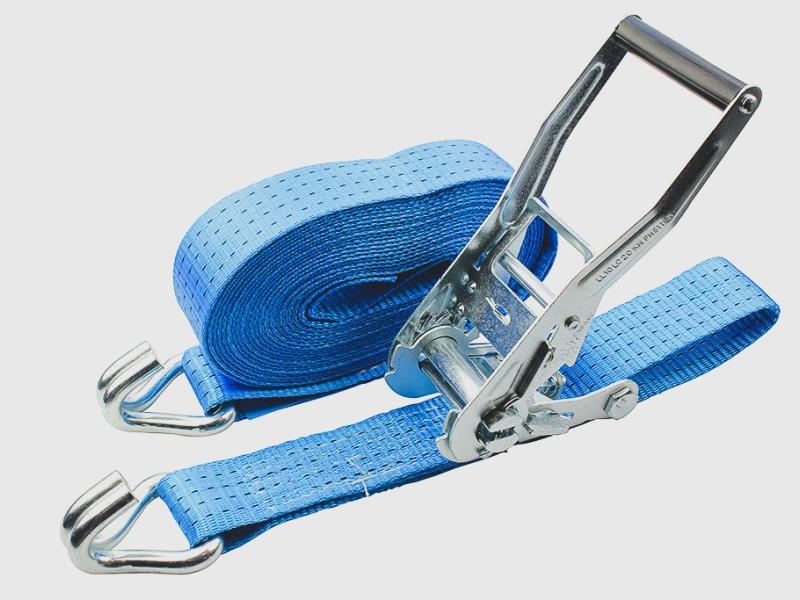FreightLok
Lashing Systems

FreightLok are the building blocks for cargo control.
Discover more
Understanding the technical terms related to load securing is crucial for ensuring the safety and efficiency of your operations. Our comprehensive glossary is designed to provide clear and concise definitions of key terms and concepts used in the field of load securing.
Stay informed, stay safe, and keep your cargo secure with our guide to technical terms in load securing.
Securing cargo according to applicable standards so there is no risk of sliding, tilting, falling or other unwanted movements.
In load restraint, we talk about forces to withstand rather than weight, therefore, we do not use kilograms but Newton to give the values of the strap. To simplify calculations, we use decaNewtons (daN, 1 daN = 10 Newtons ≈ 1 KGF). The lashing capacity of a strap is determined by the weakest link in the assembly. Please note the Lashing Capacity is NOT USED for tie down lashing, in that case, STF should be used.
The standard tension force is the force created by the SHF and transferred to the webbing. This value is strictly used for tie down lashing. If for example the STF is 500daN and you are tying down your load, the downwards force created on the load is 500daN. The STF is determined by multiple factors. For example, the length of the handle. Please remember, the higher the STF, the fewer lashing straps necessary to secure your load!
The standard hand force is the force that a ‘standard user’ can apply to the tensioning device/ratchet. In this case, 50daN, is a universal standard and used to determine the STF value of a device in combination with the webbing.
Surfaces moving past each other have a certain amount of friction. The degree of friction is expressed as the so-called coefficient of friction. The coefficient of friction indicates the friction between two surfaces; in other words, how easily one material can slide over the other. This is expressed in a number: a larger number indicates higher friction.
Tie-down lashing involves placing at least two lashing straps over a cargo unit, such as a box or crate, which are then tightened to the correct tension using a suitable ratchet. Tightening increases the friction between the object and the cargo floor, which reduces the likelihood of the object moving.
Form-closure load securing is an effective way of securing cargo. It involves placing or securing cargo in such a way that it fits perfectly in the available space, allowing minimal movement during transport.
With diagonal lashing, eight lashing belts are normally tensioned at right angles (β = 90°) to the loading surface. As standard, diagonal lashing is used either only in the longitudinal or only in the transverse direction, as the tight fit (e.g. due to blocking or other load units) secures the other direction.
Lashing straps are placed diagonal, from one corner of the load to the opposite corner.
With Block Lashing the straps are placed in a way the front, top corners are secured with tensioning devices such that they can no longer move in the direction of travel.
The maximum elongation for lashing straps according to EN 12195-2 is 7% at LC. Most standard LoadLok straps have an elongation of 5% at LC, allowing a tighter grip on your load! Also 4% webbing is available (e.g. in car transport).
Cargo Transport Unit
Maximum Securing Load
Working Load Limit
Uniform Distributed Load
Cold chain is the continuous chain of cooling during the transport of products from the manufacturer, through wholesalers, to retailers and even the end user. Monitoring the cold chain is an important part of quality control around products such as vaccines and foodstuffs, but also, for example, chemical raw materials.
The K factor of insulation represents the material's thermal conductivity or ability to conduct heat. Usually, insulation materials have a K Factor of less than one. The lower the K factor, the better the insulation. IsoLok products are named after their K value.
The loss of height while placing cargo inside the trailer. This is important to take into account. Loadlok Isolok products have the lowest height restriction in the market (110mm).
The SmartLift system allows the bulkhead to be easily and quickly repositioned over the length of the trailer. When the bulkhead is in parking or operating position, the system will lock automatically for safety during transport.
The TopMounted system comes on both sides with manual locking and lifiting, and slides into a LoadLok 3061 or 3062 J-Track.
A balancer (SmartLift) supports lifting of the panel and slides into a Loadlok 3061, 3062 or 3073 track, depending on the version of Balancer.
Loadlok also has balancer versions to fit in original Krone or Schmitz Cargobull track profiles.
A push-in solution can be used to completely seal a 1/3 compartment of a refrigerated trailer.
HACCP (Hazard Analysis and Critical Control Points) controls food safety hazards in all processes of food production, inclusive varying temperature zones in the trailer to ensure safe transportation of perishable goods.
The ATP, “Accord Transport Perissable”, is the regulation for refrigerated transport at controlled temperatures of perishable goods.
Captive tracks are using with beams. These tracks ensure that beams can not be taken out of the vehicle. It’s a fully-closed system.
Tracks are mounted into the side of the wall, creating a flat surface.
The Peak certificate is the certification mark indicating that bodies of trucks and other means of transport, such as semi-trailers, roll cages, tail lifts, bulkheads and refrigeration units meet the permitted noise standards when loading and unloading in residential areas.
The maximum capacity that can be used for decking.
The maximum capacity that an object can withstand to block cargo.